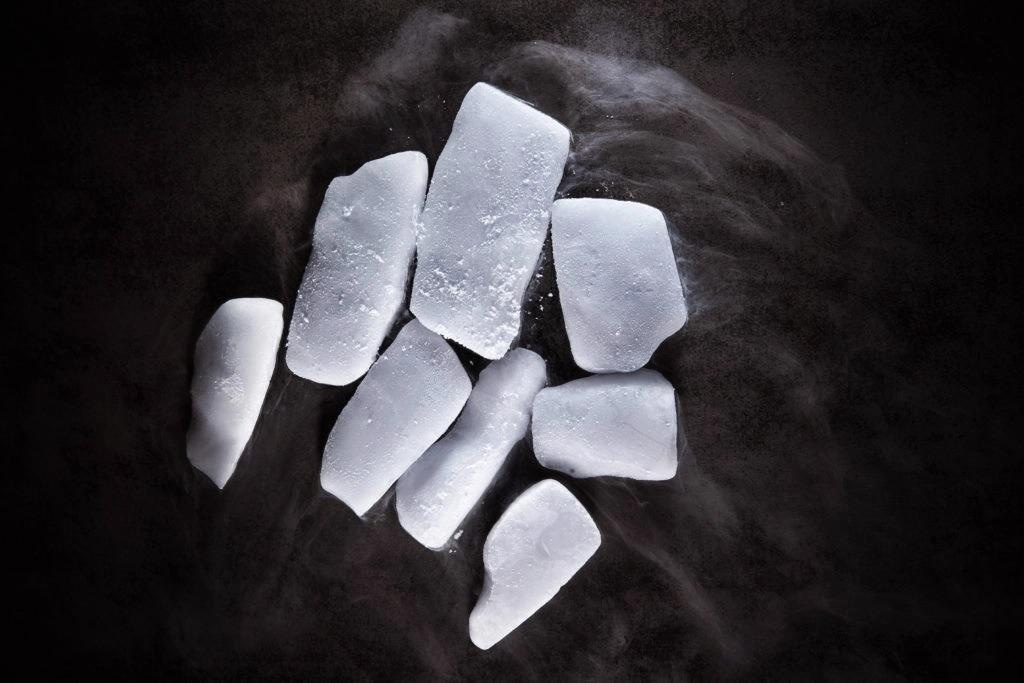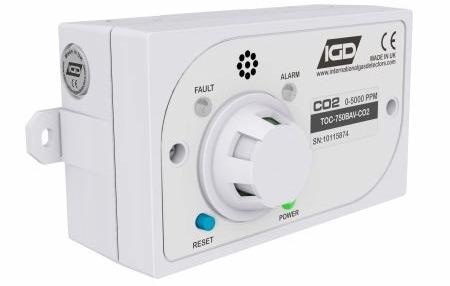A new problem has emerged with the recent news of multiple COVID vaccines becoming available: the storage and transportation of the vaccines. This complication arises because the vaccines must be stored at below freezing for long term storage and transportation.

Image Credit: International Gas Detectors Ltd
The Pfizer COVID vaccine, in particular, must be stored at -70 °C. The result is utilizing cold rooms for long term storage and dry ice for transportation. This presents a unique problem for transportation staff, storage staff and doctors alike, the toxic dangers of CO2.
This article will outline the dangers of carbon dioxide as a result of dry ice and IGD’s carbon dioxide detection solutions, both fixed and portable. Dry ice is unique, frozen carbon dioxide and is frequently utilized in numerous sectors, most notably the laboratory and hospitality industries.
The dry CO2 will change from a solid form straight to a gaseous state in normal ambient temperatures, skipping the liquid state. This is also known as sublimation (1). Due to its flexibility and transportability, dry ice is now the go-to solution for storing and transporting the vaccine.
Yet, this poses a specific, toxic danger as carbon dioxide is listed as a toxic gas under UK COSHH and EH 40 regulations (2). The information below shows the exposure levels of CO2 in the UK.
- Long Term Exposure (8 Hours) – 0.5% (5000 ppm)
- Short Term Exposure (15 minutes) – 1.5% (15,000 ppm)
In a poorly ventilated or non-ventilated room, the liberated CO2 can easily produce a very toxic hazard, as dry ice is liberating carbon dioxide in ambient temperature. For instance, 1 kg of dry ice can easily liberate up to 541 liters of toxic gaseous carbon dioxide, as detailed on the Linde Gas website (3).
Personnel transporting dry ice or in the area where dry ice is being used can become overcome by the dangerous levels of CO2 quickly if the area goes unmonitored. So, it is crucial to have carbon dioxide detection in place to monitor the environment you are working in, whether you are: storage personnel, healthcare personnel, delivery driver transporting the vaccine, or scientists.
Choosing the Right Carbon Dioxide Detection Solutions
International Gas Detectors has been designing and manufacturing gas detection solutions in the UK for more than 100 years. They are the world’s oldest independent gas detection manufacturer. They design and manufacture a variety of carbon dioxide detection solutions to meet your requirements, from fixed solutions to portable devices, as part of an extensive gas detection portfolio.

iGAS CO2 personal gas monitor. Available to order online at £400.00. Image Credit: International Gas Detectors Ltd
Portable Carbon Dioxide Detectors
These are portable carbon dioxide detection devices and are ideal for when you are transporting dry ice, either transporting dry ice from one lab to another or via vehicle transportation.
The portable carbon dioxide detection device alerts the user to any dangerous build-up of carbon dioxide by supplying a mobile detector that protects employees in confined areas or on the move. An ideal solution for portable carbon dioxide detection is the CO2-CHUM or the iGAS CO2 personal monitor from International Gas Detectors.

CO2-CHUM Portable Gas Detector. Image Credit: International Gas Detectors Ltd
Fixed Carbon Dioxide Detection
A variety of fixed carbon dioxide detectors using the leading addressable (digital) gas detection technology from International Gas Detectors are available. It is crucial to have a fixed/permanent carbon dioxide detection system in place for using dry ice when storing or transporting the new COVID vaccine.
Continuous detection of the area is supplied by the fixed detectors. The system is able to ventilate the area immediately if any dangerous levels of CO2 are detected, enabling employees to evacuate and alert safety personnel.
The TOCSIN 635 mounted gas detection control panel is the perfect gas safety solution for small to medium size applications like cold stores. The system features the automatic alarm system setup wizard, permitting clients to commission their own IGD carbon dioxide detection system quickly and error free.
All of the detectors are connected on a single 2-Core cable (daisy chained together), which drastically decreases installation costs compared to older, dated 4-20mA detectors.

Image Credit: International Gas Detectors Ltd
The 750 series safe area detectors from International Gas Detectors supply carbon dioxide detection in both 0-5000 ppm and 0-5% VOL detection ranges, which is dependent on the application.
Each sensor also has built-in I/O capability, enabling the user to locally control audible, visual alarms, increase ventilation and shut off devices direct from the nearest detector. This drastically reduces site disturbance and installation costs. Their Infrared CO2 detectors have a leading lifetime of 5 years+.
References
- U.S Geological Survey; “Frozen carbon dioxide (dry ice) sublimates directly into a vapor.” Link: https://www.usgs.gov/media/images/frozen-carbon-dioxide-dry-ice-sublimates-directly-a-vapor#:~:text=Sublimation%20and%20the%20water%20cycle,with%20no%20intermediate%20liquid%20stage.&text=%22Dry%20ice%22%20is%20actually%20solid,C%20(%2D109.3%C2%B0F) [Accessed 10th December 2020]
- Health and Safety Executive: “EH40/2005 Workplace exposure limits” Link: https://www.hse.gov.uk/pubns/books/eh40.htm [Accessed 10th December 2020]
- Linde Gas “Safety Advice 9- Handling and Usage of Dry Ice” Link: https://static.prd.echannel.linde.com/wcsstore/NL_RES_Industrial_Gas_Store/Attachment/Downloads/Handling_and_usage_of_dry_ice.pdf [Accessed 10th December 2020]

This information has been sourced, reviewed and adapted from materials provided by International Gas Detectors Ltd.
For more information on this source, please visit International Gas Detectors Ltd.